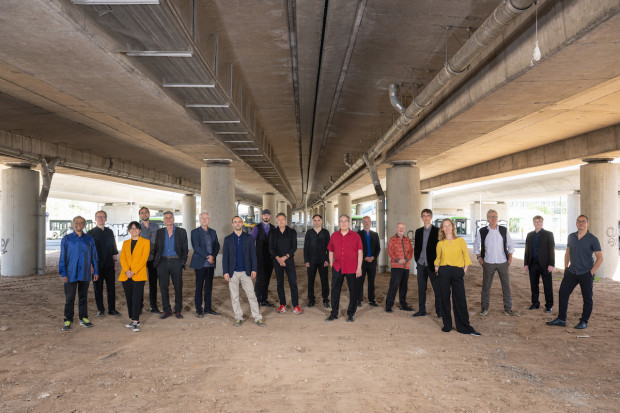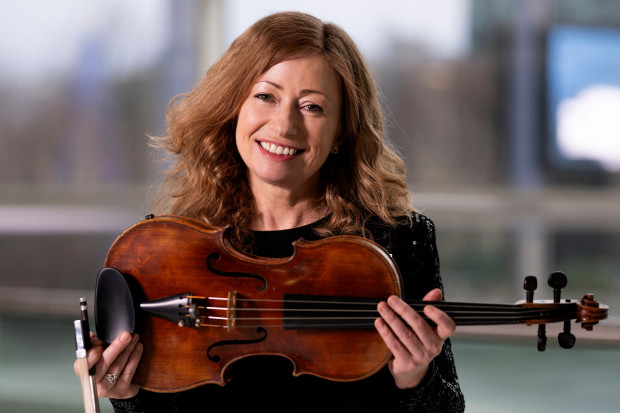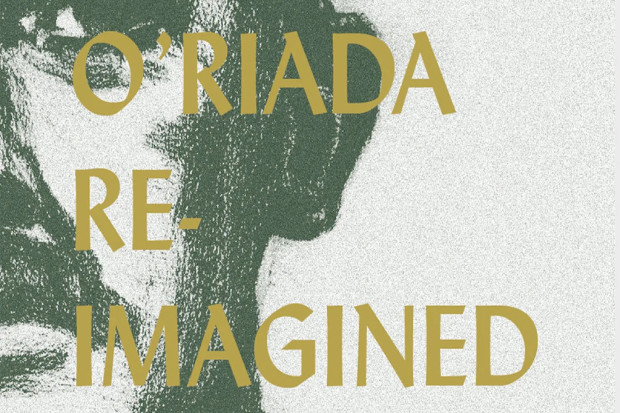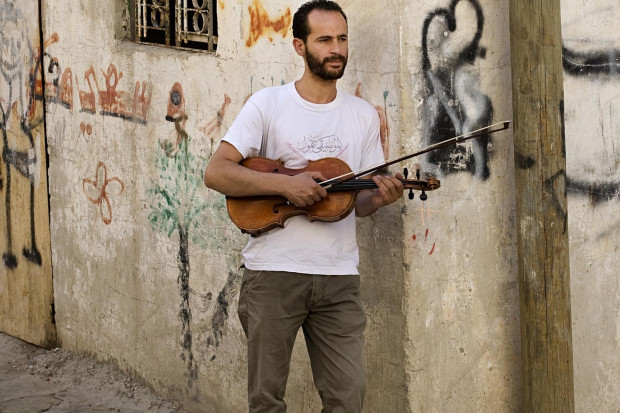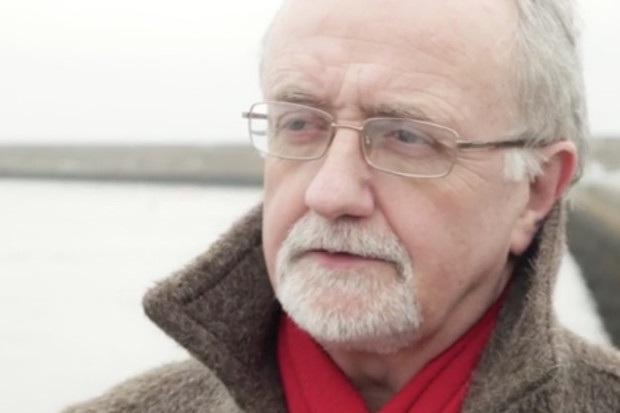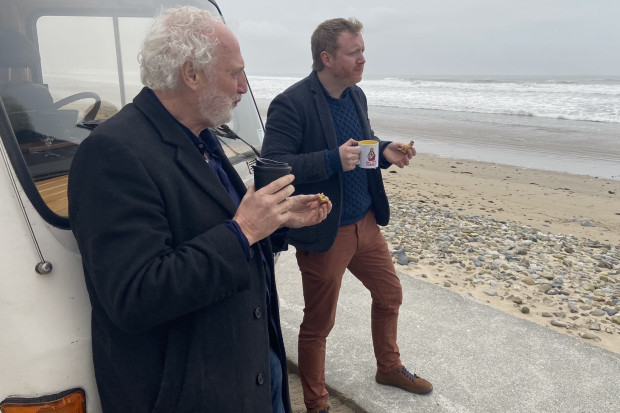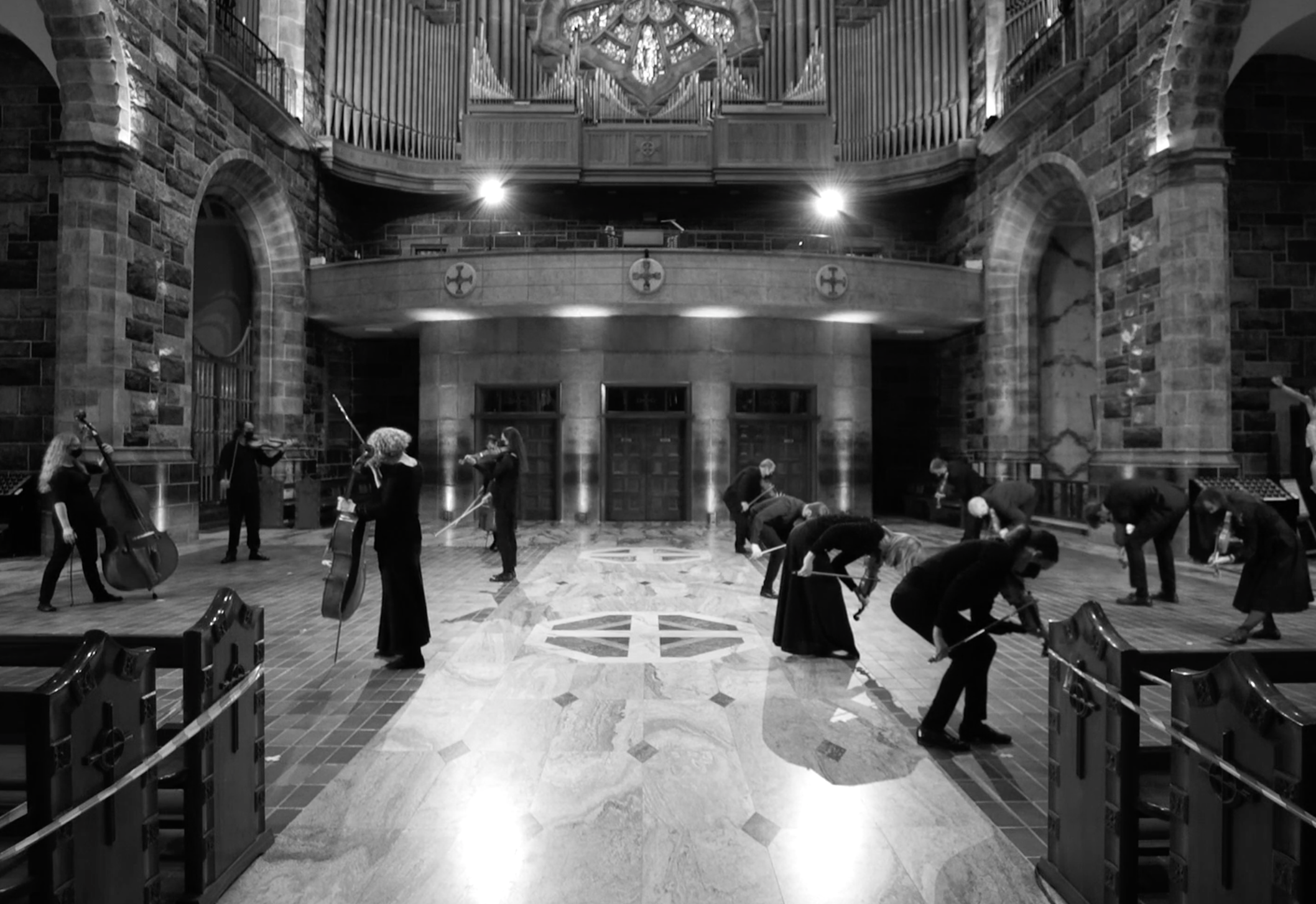
Luminosa performing Sam Perkin's 'Visualization' at Galway Cathedral.
Gathering and Scattering Sounds
Luminosa is the new Galway string orchestra, formed in 2019 and forced into an immediate hiatus in 2020. The three concerts of their 2021 season, like the ensemble’s name, emphasise the idea of light: ‘Dawn Light’, which took place in March; ‘Solstice’, which took place on 10 July; and ‘Dusk’, which is scheduled to take place in autumn.
Already we can see with this, and with the concert programmes, some of the group’s emerging ideals: a thematic connection with light, and with time. The programming has a strong emphasis on post-Romantic tonality, although space is given to more avant-garde composers, Sam Perkin in this concert and Linda Buckley in the next. There’s a strong awareness of the visual: the orchestra performs, at least for these livestreamed concerts, in a circle facing each other, rather than facing outward to an imagined audience; for the première of Perkin’s Visualization on 10 July, itself a highly visual piece, the video production by Unbound Media made some excellent choices – filming in black and white, not to hide away the difference of this piece but to emphasise it, and allowing their camera to move rapidly with and through the musicians, recreating, as much as possible, the experience of being there.
Perkin mentioned by name, both in the programme note and in a mid-concert interview, the American composer Pauline Oliveros as a major influence on Visualization. Oliveros is best known for her development of ‘deep listening’, an almost meditative focus on sound; a practice of actively and fully listening. The work also incorporates the Dalcroze method of music and movement, and was directed by Dalcroze practitioner Diane Daly from the violin. Luminosa commissioned this work in 2019, and it’s aptly titled, with a focus on ‘seeing’ invisible sound. The performers move around the space, ritually ‘gathering’ sounds and scattering them across the space of the church, creating a sort of confetti shower of harmony, starting from the softest hush to full major chords and arpeggios and back again.
The work was conceived and written as a ‘ritualistic return to live performance’, according to the composer, and was composed with Galway Cathedral in mind (though any ‘very resonant’ space would suffice). It’s the resonance of the space that allows the music and sound to travel from one side of the room to the other, and allows the musicians to make sense of the ‘scattering’ and ‘catching’ motions.
But the work’s conceit worked against it in this context. The bath of sound the composer intended, which would likely be lush beyond measure inside the Cathedral, is narrowed by whatever speakers the viewer is using. It felt as though I was looking in through a window, apart from the music rather than a part of it. Watching, wanting to be there among the sound, the disconnection was palpable.
Carefully balanced
The Scottish composer John Maxwell Geddes’ A Rose for Margaret, for violin and string orchestra, was not written for Galway Cathedral, but as it was premiered in the Mackintosh Church in Glasgow, the composer may also have had a church acoustic in mind when he wrote it. The work – the composer’s last – is delicate and carefully balanced, the long violin phrases, performed beautifully by Brigid Leman, weaving in and out with gently flowing counterpoint from the orchestra.
Corelli’s Concerto Grosso in C minor, Op. 6 No. 3, was the opening work of the concert, and, more than the other works, showcased the new orchestra’s balanced sound, the wide open, crystal clear opening chords acting as a stately overture to the concert, and the concertino sections bright and clear. The slow movements were played with a particular warmth, with the third movement, rich and full in sound, emphasising the passionate Baroque dissonances.
The quicker movements from Peter Warlock’s Capriol Suite brought a spry energy to the latter half of the programme. This collection of six short dances drawing on sixteenth-century sources brought moments of brightness in the fourth and sixth movements, stateliness in the first two, and tenderness in the fifth.
The Norwegian composer Odd Grüner-Hegge’s Elegiac Melody provided a return to the rich texture of the Geddes, though more sorrowful in tone. As a showcase for the full, homogenous sound that Luminosa can achieve, it worked very well. The short work bears a resemblance to Barber’s Adagio, and the ensemble worked in tandem to bring the sound to its emotional peak before settling back to silence.
Lighter in texture
This journal’s last review of Luminosa, of their 2019 inaugural concerts, noted that the resonance of available venues in Galway can have the effect of muddying the sound; this performance showed that careful sound engineering and good programming can overcome such difficulties. Obviously Perkin’s work was made to capitalise on it, but much of the rest of the programme, especially the Geddes and the Grüner-Hegge, worked with the atmosphere of Galway Cathedral, rather than fighting it. The other works, lighter in texture and quicker, could have lost something, but the performance, and the sound engineering by Niall Maher of Sound to Light, ensured that the music never lost its crispness or clarity.
Luminosa’s March livestream, ‘Dawn Light’, also featured an interesting programme, opening with Mozart and closing with Benjamin Britten’s delightful Simple Symphony. While Luminosa’s warm sound was still on display in that performance, it wasn’t without untidy moments, including intonation issues and muddled counterpoint in places. This second concert in the series brings us a more assured, more congruent sound. The programme’s disparate works showed the group’s diversity of skill and technique. And, especially with Visualization, the weight of the group’s name, and perhaps their ambition, comes to the fore: to be a light in a dark time.
For details of upcoming Luminosa events. visit https://www.luminosa.ie/concerts
Published on 22 July 2021
Brendan Finan is a teacher and writer. Visit www.brendanfinan.net.










